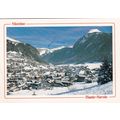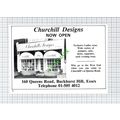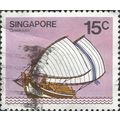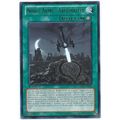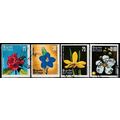Shewsbury, Shropshire - The Dingle - real photo postcard c.1950s
- Condition : Used
- Dispatch : 2 Days
- Brand : None
- ID# : 140976950
- Quantity : 1 item
- Views : 329
- Location : United Kingdom

- Seller : justthebook (+1699)
- Barcode : None
- Start : Sun 19 Jul 2015 12:16:39 (BST)
- Close : Run Until Sold
- Remain : Run Until Sold
More Listings from This Seller view all
Seller's Description
- Postcard
- Picture / Image: The Dingle, Shrewsbury, Shropshire - real photo type
- Publisher: none given
- Postally used: no
- Stamp: n/a
- Postmark(s): n/a
- Sent to: n/a
- Notes / condition:
Please ask if you need any other information and I will do the best I can to answer.
Image may be low res for illustrative purposes - if you need a higher definition image then please contact me and I may be able to send one. No cards have been trimmed (unless stated).
------------------------------------------------
Postage & Packing:
Postage and packing charge should be showing for your location (contact if not sure).
No additional charges for more than one postcard. You can buy as many postcards from me as you like and you will just pay the fee above once. Please wait for combined invoice. (If buying postcards with other things such as books, please contact or wait for invoice before paying).
Payment Methods:
UK - PayPal, Cheque (from UK bank) or postal order
Outside UK: PayPal ONLY (unless otherwise stated) please. NO non-UK currency checks or money orders (sorry).
NOTE: All postcards are sent in brand new stiffened envelopes which I have bought for the task. These are specially made to protect postcards and you may be able to re-use them. In addition there are other costs to sending so the above charge is not just for the stamp!
I will give a full refund if you are not fully satisfied with the postcard.
----------------------------------------------
Text from the free encyclopedia WIKIPEDIA may appear below to give a little background information (internal links may not work) :
*************
Shrewsbury i/'?ru?zbri/ or i/'?ro?zbri/)[1][2] is the county town of Shropshire, in the West Midlands of England, on the River Severn. It has a population of approximately 72,000[3] and is the second largest town in Shropshire, after Telford.
Shrewsbury is a historic market town whose town centre has a largely unaltered medieval street plan and over 660 listed buildings,[4] including several examples of timber framing from the 15th and 16th centuries. Shrewsbury Castle, a red sandstone fortification, and Shrewsbury Abbey, a former Benedictine monastery, were founded in 1074 and 1083 respectively by the Norman Earl of Shrewsbury, Roger de Montgomery.[5]
The Shrewsbury Flower Show is one of the largest horticultural events in the country of England.[6][7][8]
Today, 9 miles (14 km) east of the Welsh border, Shrewsbury serves as the commercial centre for Shropshire and mid-Wales, with a retail output of over £299 million per year.[9] There are some light industry and distribution centres, such as Battlefield Enterprise Park, mainly on the outskirts. The A5 and A49 trunk roads cross near to the town, as do five railway lines at Shrewsbury railway station.
The town was possibly the site of the capital of Powys, known to the ancient Britons as Pengwern, signifying ""the alder hill"";[10] and in Old English as Scrobbesburh (dative Scrobbesbyrig), which has several meanings; ""fort in the scrub-land region"", ""Scrobb's fort"", ""shrubstown"" or ""the town of the bushes"".[11][12] This name gradually evolved in three directions, into Sciropscire, which became Shropshire; into Sloppesberie, which became Salop/Salopia (an alternative name for both town and county), and into Schrosberie, which eventually became the town's name, Shrewsbury.[10] Its Welsh name Amwythig means ""fortified place"".[13]
It is believed that Anglo-Saxon Shrewsbury was most probably a settlement fortified through the use of earthworks comprising a ditch and rampart, which were then shored up with a wooden stockade.[14]
Nearby is the village of Wroxeter, 5 miles (8 km) to the south-east, site of the now ruined Roman city of Viroconium Cornoviorum. Viroconium was the fourth largest civitas capital in Roman Britain. As Caer Guricon it may have served as the early Dark Age capital of the kingdom of Powys.[15] The Shrewsbury area's regional importance in the Roman era was recently underlined with the discovery of the Shrewsbury Hoard in 2009.
Over the ages, the geographically important town has been the site of many conflicts, particularly between the English and Welsh. Shrewsbury was the seat of the Princes of Powis for many years; however, the Angles, under King Offa of Mercia, took possession of it in 778.
There is evidence to show that by the beginning of the 900's, Shrewsbury was home to a mint.[14]
The historic town centre still retains its medieval street pattern and many narrow streets and passages. Some of the passages, especially those that pass through buildings from one street to the next, are called ""shuts"" (the word deriving from ""to shoot through"" from one street to another).[69][70] Many specialist shops, traditional pubs and local restaurants can be found in the hidden corners, squares and lanes of Shrewsbury. Many of the street names have also remained unchanged for centuries and there are some more unusual names, such as Butcher Row, Longden Coleham, Dogpole, Mardol, Frankwell, Roushill, Grope Lane, Gullet Passage, Murivance, The Dana, Portobello, Bear Steps, Shoplatch and Bellstone.[71]
The Public Library, in the pre-1882 Shrewsbury School building,[72] is on Castle Hill. Above the main entrance are two statues bearing the Greek inscriptions ""Philomathes"" and ""Polymathes"". These portray the virtues ""Lover of learning"" and ""Much learning"" to convey the lesson that it is good to gain knowledge through a love of learning.
In the centre of the town lies The Quarry. This 29 acre (120,000 m²)[73] riverside park attracts thousands of people throughout the year and is enjoyed as a place of recreation. Shrewsbury has traditionally been known as the ""Town of Flowers"", a moniker incorporated into many of the signs on entrance to the town via major roads, although this was replaced in 2007 with 'the birthplace of Charles Darwin'.[74]
The British Army's Light Infantry has been associated with Shrewsbury since the 17th century when the first regiments were formed and many more regiments have been raised at Shrewsbury before being deployed all over the world from the American Revolutionary War to the current conflicts in Iraq and Afghanistan. Today, after several major reorganisations, the Light Infantry now forms part of the regiment known simply as The Rifles. Shrewsbury's Copthorne Barracks, spiritual home of the Light Division, still houses the Headquarters of the British Army's 143 (West Midlands) Brigade, although that of the 5th Division disbanded in April 2012 as part of the reorganisation of the Army's Support Command.[75]
Between 1962 and 1992 there was a hardened nuclear bunker, built for No 16 Group Royal Observer Corps Shrewsbury, who provided the field force of the United Kingdom Warning and Monitoring Organisation and would have sounded the four-minute warning alarm in the event of war and warned the population of Shrewsbury in the event of approaching radioactive fallout.[76] The building was manned by up to 120 volunteers who trained on a weekly basis and wore a Royal Air Force style uniform. After the breakup of the communist bloc in 1989, the Royal Observer Corps was disbanded between September 1991 and December 1995. However, the nuclear bunker still stands just inside Holywell Street near the Abbey as a lasting reminder of the Cold War, but is now converted and used as a veterinary practice.
The tourist information centre is at Rowley's House up Barker Street in the town centre. The three main museums are Shrewsbury Museum & Art Gallery (at Rowley's House), Shrewsbury Castle (which houses the Shropshire Regimental Museum) and the Coleham Pumping Station.[77] Also, there is the Gateway arts and drama centre and there are also various private galleries and art shops around the town. Another notable feature of the town is Lord Hill's Column, the largest free-standing Doric column in the world.[78]
The Quantum Leap is an abstract sculpture unveiled in the town centre in 2009 to mark the bicentenary on the birth of Shrewsbury biologist Charles Darwin.
type=real photographic (rp)
city/ region=shrewsbury
period=post-war (1945 - present)
postage condition=unposted
number of items=single
size=standard (140x89mm)
Listing Information
| Listing Type | Gallery Listing |
| Listing ID# | 140976950 |
| Start Time | Sun 19 Jul 2015 12:16:39 (BST) |
| Close Time | Run Until Sold |
| Starting Bid | Fixed Price (no bidding) |
| Item Condition | Used |
| Bids | 0 |
| Views | 329 |
| Dispatch Time | 2 Days |
| Quantity | 1 |
| Location | United Kingdom |
| Auto Extend | No |



 for 1 item(s)
for 1 item(s)








